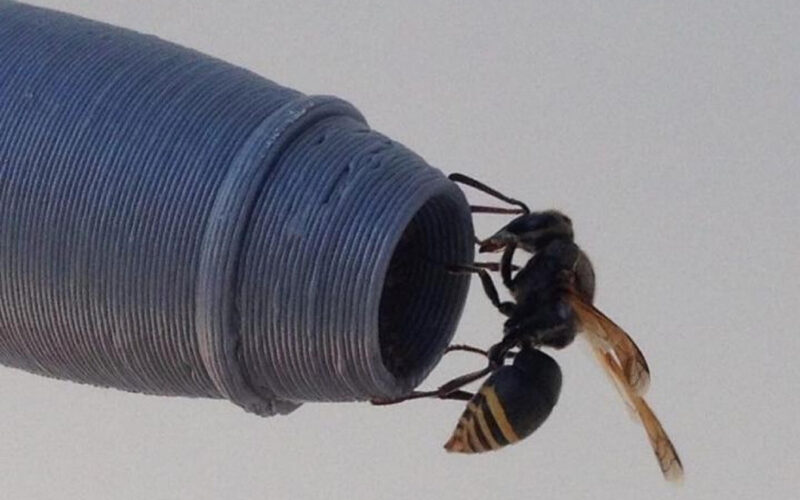The wasps of the Pachodynerus species have a problematic habit: they slip into human-made equipment to build their nests. Already a hassle when they decide to settle in someone’s home, they become even more dangerous when they get near an aircraft.
Several reports of the Australian Transport Safety Bureau (ATSB) have traced back incidents and abandoned takeoffs to “mud-dauber wasp activity”, especially at Brisbane Airport (BNE). The ATSB indicates that from 2008 to 2018 at least four of the 15 incidents at Brisbane airport where one of the pitot probes had a partial or total blockage were attributed to insect nests.
Following the recurring problem, a study was launched by the consulting firm Eco Logical Australia. The experiment took place between 2016 and 2019 at Brisbane airport and saw researchers create 3D-printed mock pitot tubes of various dimensions corresponding to different aircraft to observe the behavior of the Pachodynerus nasidens, also known as the keyhole wasp.
Over the 39 months of observation, 93 instances of fully blocked probes were recorded. The probes of the Boeing 737, whose diameter was the largest reviewed, represented 56.3% of all blockages. Then came the A330 pitot tube, corresponding to 19.3% of blockages. The smallest probe, from an Embraer ERJ90, was the least affected.
Pitot probes are critical during flight operations. The devices are responsible for measuring airspeed. Without proper reading, pilots cannot keep an appropriate speed in order to maintain sufficient lift during take-off or landing.
“We hope this research will bring attention to a little known but serious issue for air travel in tropical and sub-tropical regions,” Alan House of Eco Logical and his colleagues explain in their study. “Having found its way across the Pacific Ocean, there is no reason to doubt that it could spread to other parts of Australia. The consequences of not managing this clever but dangerous pest could be substantial.”
Pitot probe covers are already in use in Brisbane due to the high level of insect activity. The Civil Aviation Safety Authority (CASA) states that wasps can build a nest in an uncovered pitot probe in less than 20 minutes. But as highlighted in the study, the problem could spread, as the species is invasive. Originally native to Central and South America and the Caribbean, the keyhole wasp was first identified in Brisbane in 2010. Researchers call for further control and eradication measures.

